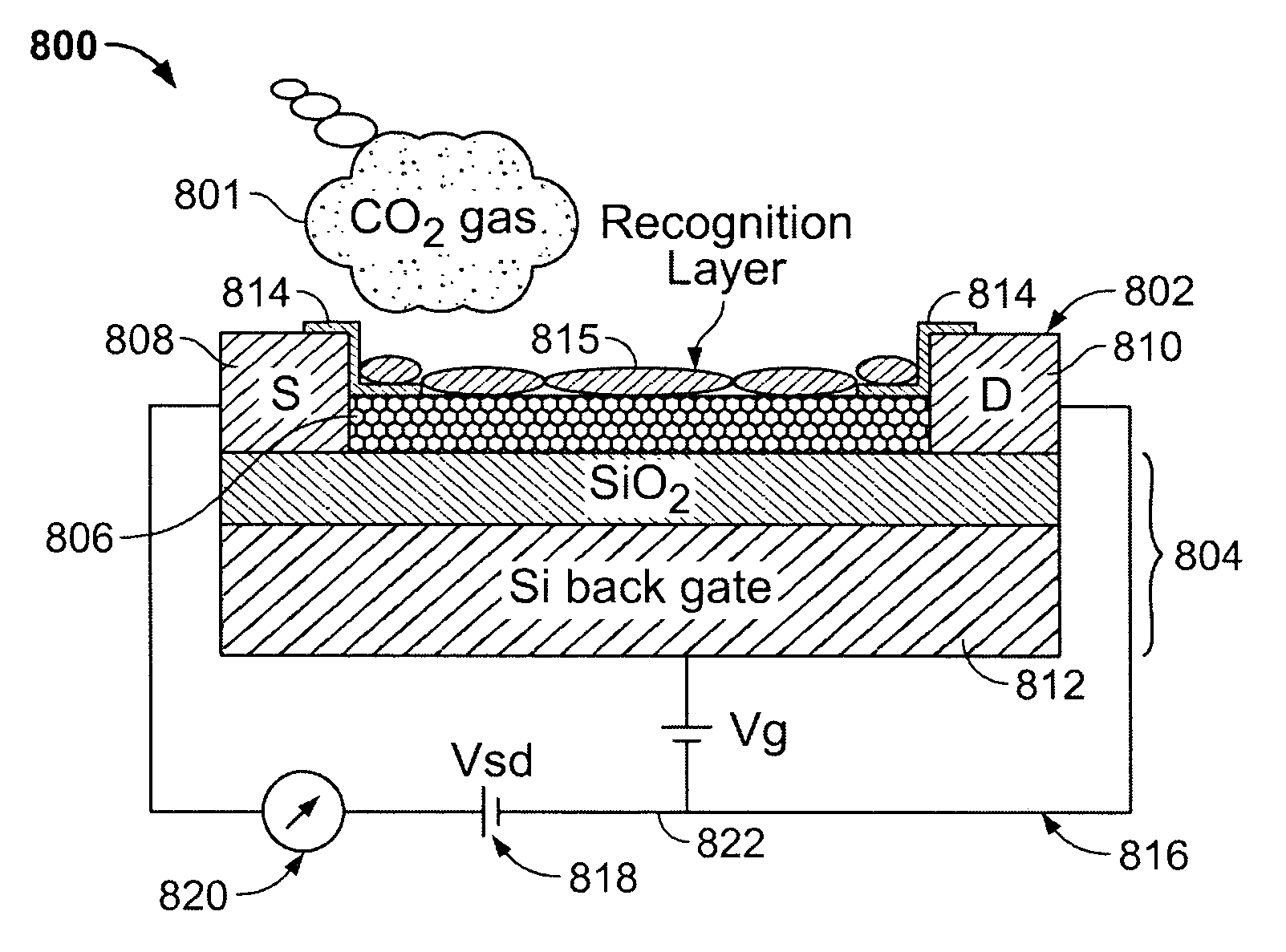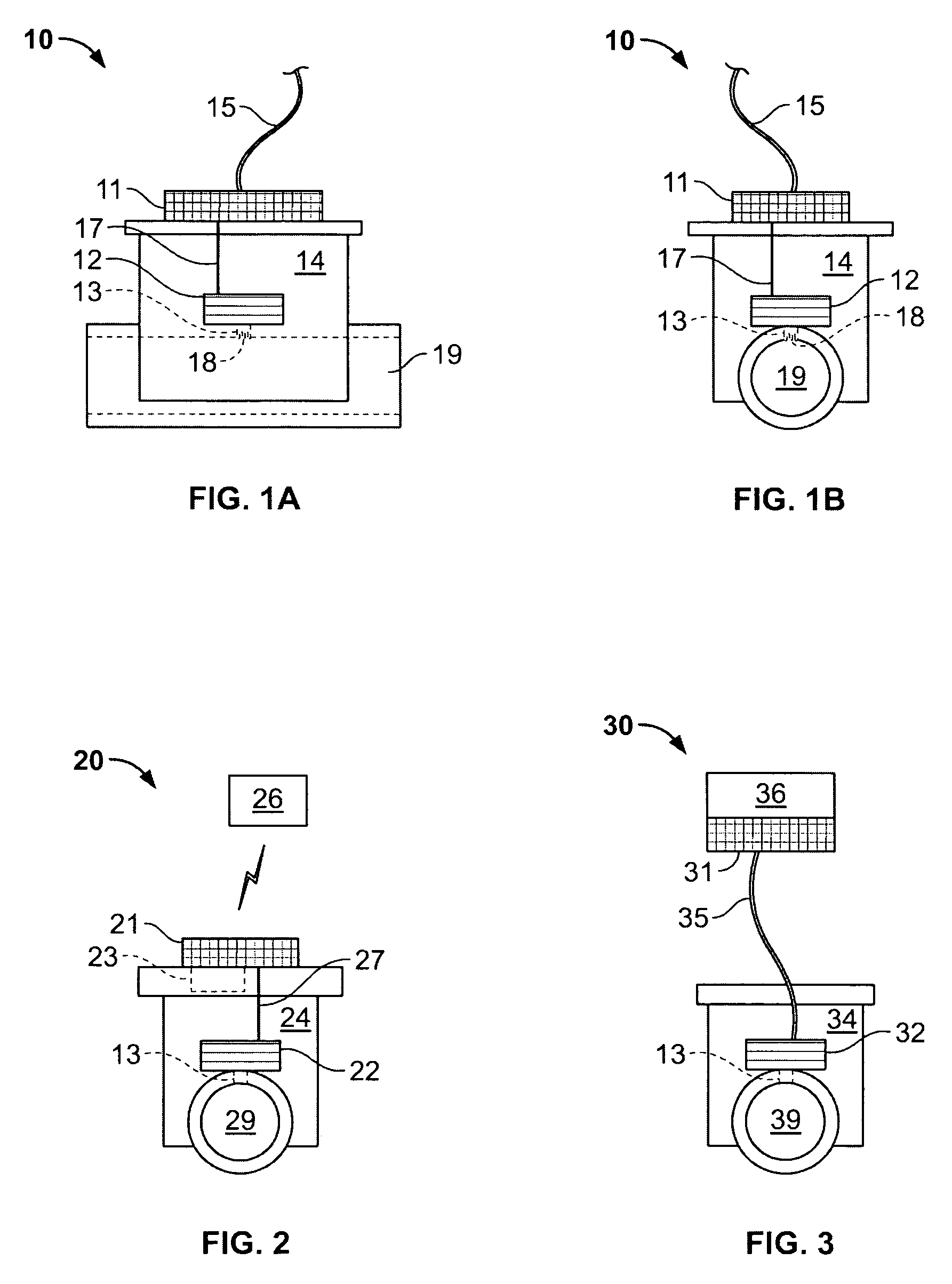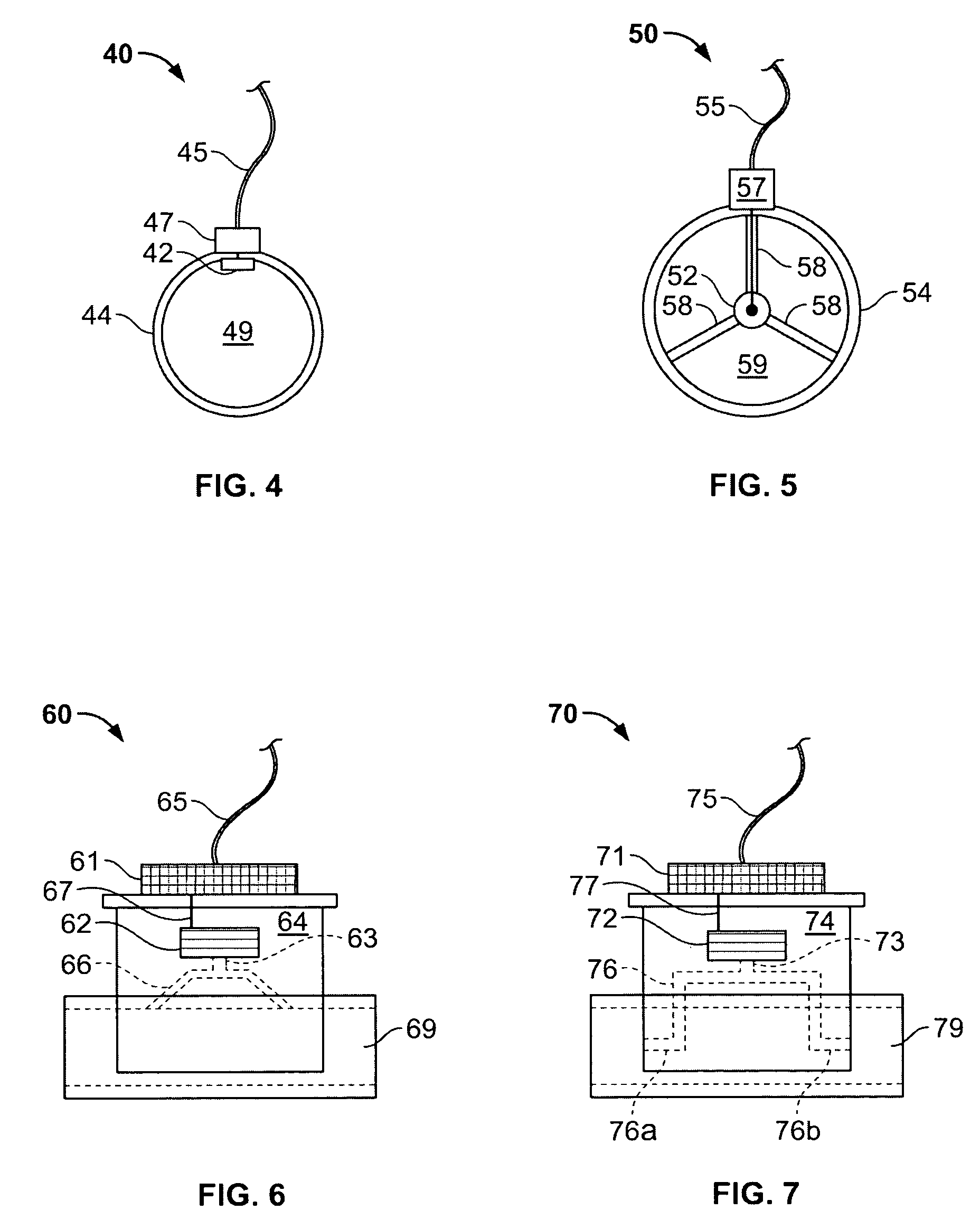Nanoelectronic capnometer adaptor including a nanoelectric sensor selectively sensitive to at least one gaseous constituent of exhaled breath
a nanoelectric sensor and adaptor technology, applied in the direction of respiratory organ evaluation, instruments, chemical indicators, etc., can solve the problems of limiting the use of capnography, affecting cosub>2 /sub>monitoring effectiveness, and high cost and limitation of this technology, so as to reduce the cost of sensor components, reduce power consumption, and reduce the effect of siz
- Summary
- Abstract
- Description
- Claims
- Application Information
AI Technical Summary
Benefits of technology
Problems solved by technology
Method used
Image
Examples
Embodiment Construction
[0046]The embodiment of the invention incorporates a nanoelectronic capnometer into an adapter for patient airway monitoring. The resulting device seamlessly integrates into a mainstream capnography setup and delivers performance advantages over that of today's mainstream and sidestream NDIR capnometers.
[0047]FIGS. 1-7 depict a number of different embodiments, in which the same or generally similar elements are identified by numbers, in which the last digit corresponds to the equivalent or corresponding element, as much as possible, in each figure, with the digits preceding the last digit corresponding to the figure number of each example embodiment.
[0048]Referring to FIGS. 1A and 1B, in an exemplary embodiment having aspects of the invention, the unit may be configured like conventional airway adapters, with an input and output for connecting tubing to an air channel 19 running through a housing 14. One opening of housing 14 may be fed by the patient's respiration and the other ope...
PUM
| Property | Measurement | Unit |
|---|---|---|
| conducting | aaaaa | aaaaa |
| concentration | aaaaa | aaaaa |
| conductive | aaaaa | aaaaa |
Abstract
Description
Claims
Application Information
 Login to View More
Login to View More - R&D
- Intellectual Property
- Life Sciences
- Materials
- Tech Scout
- Unparalleled Data Quality
- Higher Quality Content
- 60% Fewer Hallucinations
Browse by: Latest US Patents, China's latest patents, Technical Efficacy Thesaurus, Application Domain, Technology Topic, Popular Technical Reports.
© 2025 PatSnap. All rights reserved.Legal|Privacy policy|Modern Slavery Act Transparency Statement|Sitemap|About US| Contact US: help@patsnap.com



